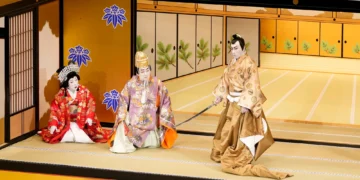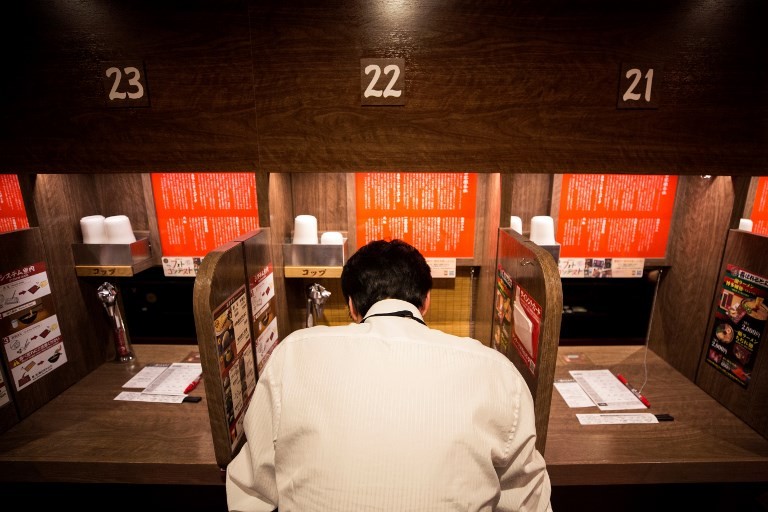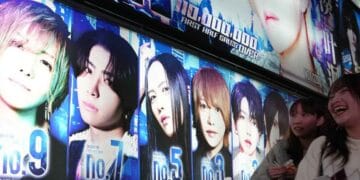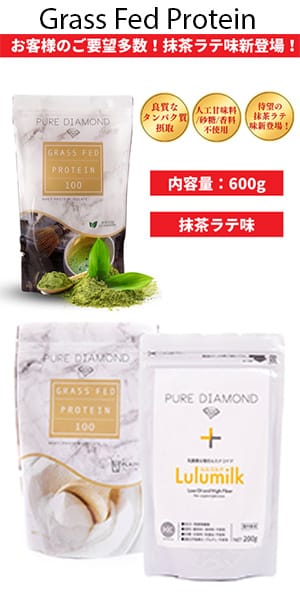Introduction: A Journey Through Tokyo’s Second-Hand Fashion Paradise
In the heart of the world’s most dynamic city, a fashion revolution is quietly thriving. Tokyo’s vintage fashion scene isn’t just about old clothes—it’s a cultural phenomenon that perfectly captures the city’s unique ability to honor tradition while embracing the future. As you walk through the narrow streets lined with carefully chosen vintage shops, you’ll discover a world where each piece of clothing tells a story, where sustainability meets style, and where the past is constantly reworked.
The New Wave of Sustainable Style
2024 has seen an unusual rise in Tokyo’s vintage market, with over 3,000 second-hand shops now dotting the city’s landscape. What’s driving this boom is a perfect storm of sustainability understanding, unique style hunting, and economic savvy. Young Tokyoites are leading this change, with a remarkable 70% of Gen Z shoppers regularly buying second-hand fashion. This shift represents more than just a trend—it’s a fundamental change in how people think about clothing, value, and environmental impact.
Tokyo’s Vintage Neighborhoods: A Style Guide
Shimokitazawa: The Vintage Heart

Often called “Shimokita” by locals, this neighborhood houses over 200 vintage shops in its narrow, winding streets. The area’s charm lies in its organized chaos—vintage shops are stacked next to coffee houses, independent bookstores, and tiny restaurants. Bear Pond stands as an iconic destination for vintage denim enthusiasts, offering carefully selected pieces that showcase the evolution of Japanese denim culture. New York Joe Exchange brings a taste of western vintage to the neighborhood, while Flamingo specializes in carefully chosen Japanese fashion pieces from different eras.
Koenji: The Alternative Scene
Less touristy than Shimokita, Koenji is where serious vintage hunters go. This neighborhood has maintained its rebellious spirit from the punk era, reflected in its diverse vintage offerings. The military wear sections in many shops display flawlessly maintained pieces from various eras, while the American workwear collections tell stories of utility and durability. The 80s and 90s streetwear sections burst with color and attitude, featuring rare pieces that capture the essence of these dynamic decades. Punk fashion souvenirs isn’t just sold here—it’s celebrated as part of the area’s cultural history.
Harajuku’s Hidden Treasures
Beyond the kawaii culture and tourist crowds, Harajuku’s back streets reveal some of Tokyo’s most elegant vintage boutiques. RAGTAG has established itself as the go-to destination for high-end designer resale, with each piece thoroughly checked and preserved. Pass the Baton takes a unique approach by including the previous owner’s story with each item, creating a personal connection between past and present owners. Santa Monica brings the best of American vintage to Tokyo, carefully selecting pieces that resonate with Japanese fashion sensibilities.
The Digital Revolution in Vintage Shopping

The combination of classic vintage shopping and modern technology has created an entirely new retail experience in Tokyo. Many shops now offer refined virtual try-on experiences, allowing customers to see how vintage pieces might look without physically trying them on. Instagram live shopping events have become frequent events, helping vintage fashion lovers to shop from anywhere in the world. Digital inventory systems have revolutionized the way shops track their stock, making it easier for customers to find specific pieces. QR code price tags now provide detailed item histories, including origin, materials, and care instructions.
Sustainability Impact
The environmental impact of Tokyo’s vintage scene is significant and measurable. When a shopper chooses a vintage fashion piece over a new one, they save approximately 2,700 liters of water—the amount typically used to produce a single new garment. Tokyo’s second-hand market reduced fashion waste by 25% in 2023, a testament to the increasing awareness among shoppers. The prevention of 50,000 tons of textile waste in 2023 alone demonstrates the visible environmental benefits of choosing vintage fashion.
Expert Shopping Tips and Timing
The art of vintage shopping in Tokyo requires strategy and patience. Early mornings have proven to be the golden hours for serious collectors, as shops typically put out their new arrivals before opening. These precious morning hours offer the best selection and the highest chance of finding unique pieces. Weekday shopping provides a more relaxed experience, with fewer crowds and more opportunity to engage with knowledgeable staff. The end of each season brings substantial discounts, making it an ideal time for budget-conscious shoppers to expand their vintage fashion collections.
Understanding the Price Landscape

Tokyo’s vintage fashion market operates across a broad price spectrum, representing the different types of items available. Entry-level vintage pieces, including basic t-shirts, simple dresses, and everyday wear, typically range from ¥1,000 to ¥5,000. These pieces often offer excellent value while maintaining authentic vintage character. The mid-range market, dominated by designer vintage pieces, commands prices between ¥10,000 and ¥50,000, reflecting the quality and status of luxury brands. For serious collectors, rare and exceptional pieces can exceed ¥50,000, with some museum-quality items reaching significantly higher prices. These pieces often represent important moments in fashion history or come from highly sought-after collections.
The Art of Authentication
Authentication in Tokyo’s vintage fashion scene is taken extremely seriously. Experienced buyers and sellers pay careful attention to stitching quality, examining the reliability and accuracy of seams that often reveal a garment’s authenticity. Brand labels require particular examination, as vintage labels possess distinct characteristics that change by era. Hardware details, from zippers to buttons, often carry maker’s marks that help date and authenticate pieces. Vintage sizing presents unique challenges, as size standards have evolved significantly over the decades, making it essential to understand historical sizing conventions.
Cultural Significance and Philosophy
The Japanese concept of Mottainai, which expresses regret over waste, deeply influences Tokyo’s vintage fashion culture. This philosophy extends beyond mere conservation to embrace the idea that objects possess inherent value and deserve respect. The aesthetic principle of Wabi-sabi, finding beauty in imperfection, perfectly aligns with vintage fashion, where signs of wear and aging are often celebrated rather than hidden. Shouganai, the acceptance of what cannot be changed, reflects in the way vintage shoppers embrace the unique characteristics and limitations of second-hand pieces.
The Future of Vintage Fashion in Tokyo
Tokyo’s vintage fashion scene continues to evolve with technological advancement. Improved reality experiences are being developed to allow customers to visualize how vintage pieces might be styled with their existing wardrobe. Blockchain technology is emerging as a solution for authenticating luxury vintage items, providing a permanent record of ownership and origin. Educational centers focused on sustainable fashion are appearing throughout the city, teaching both preservation methods and the environmental impact of fashion choices. Virtual marketplaces are expanding, making Tokyo’s vintage fashion treasures accessible to global collectors while maintaining the personal touch that makes vintage shopping special.
Seasonal Shopping Guide
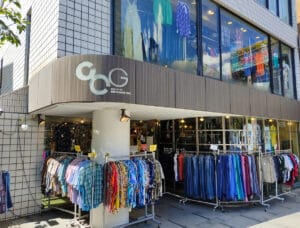
Each season in Tokyo brings its own vintage shopping opportunities. Spring sees a rise in light jackets and vintage denim, perfect for Tokyo’s mild temperatures and occasional showers. Summer brings out collections of vibrant vintage sundresses and rare Hawaiian shirts, many preserved from Japan’s post-war American influence. Fall is marked by the appearance of leather jackets and exquisite vintage knitwear, often including pieces from renowned European fashion houses. Winter showcases an impressive selection of vintage coats and designer accessories, with many pieces reflecting Tokyo’s unique blend of functionality and high fashion.
Practical Considerations for Vintage Shopping
Successful vintage shopping in Tokyo requires preparation. Many smaller shops operate on a cash-only basis, making it essential to carry sufficient funds. A measuring tape becomes invaluable when navigating vintage sizing, which often differs significantly from modern standards. Bringing a sturdy shopping tote not only helps with purchases but also supports environmental consciousness. Language barriers can be overcome with translation apps, which prove particularly useful when discussing details about vintage pieces with knowledgeable shop staff.
Conclusion: The Timeless Appeal of Tokyo Vintage
Tokyo’s vintage fashion scene represents more than just a shopping experience—it’s a living museum of fashion history, a testament to sustainable consumption, and a celebration of individual style. Whether you’re a dedicated collector or new to vintage fashion, Tokyo’s second-hand shops offer an one-of-a-kind journey through time and style. The city’s unique approach to preserving and celebrating vintage fashion continues to influence global trends while maintaining its distinctive character.
As we look to the future, Tokyo’s vintage fashion scene stands as a model for sustainable fashion consumption, proving that style and environmental awareness can coexist beautifully. The next time you find yourself in Tokyo, take time to explore its vintage treasures—you might just discover a piece of fashion history that speaks to your soul.
If you want to know the best way to elevate your style read this.



